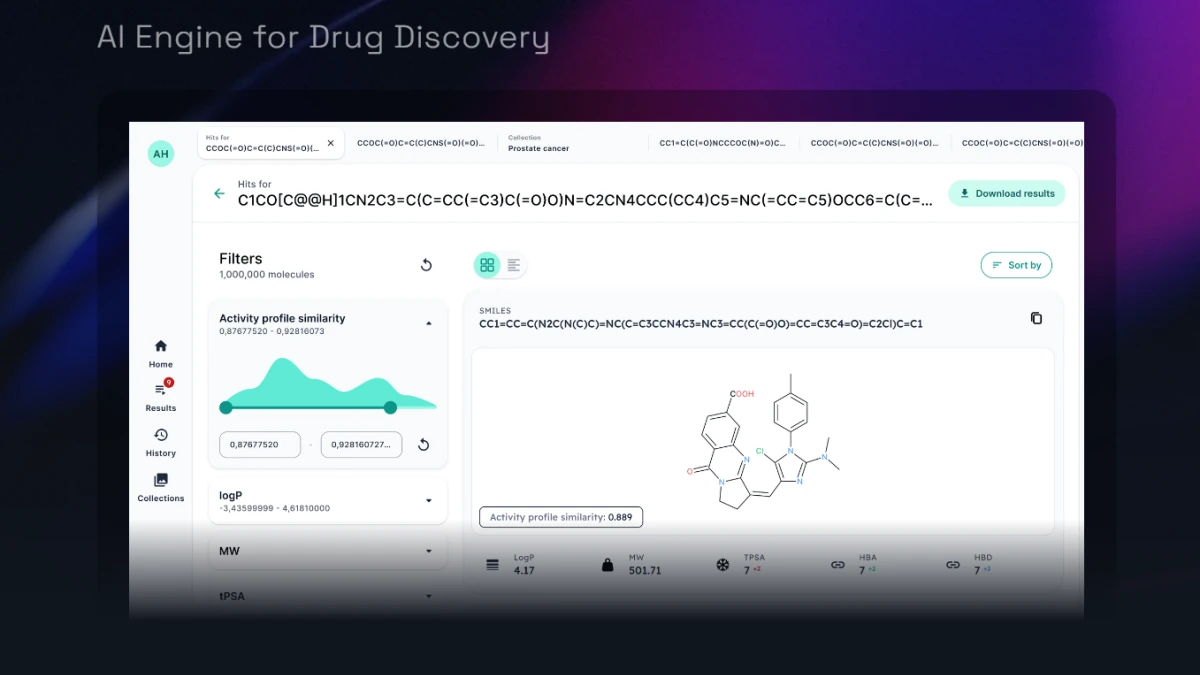Sponsored by OPTIC
AI Is Key to Democratizing Drug Discovery
The global drug development landscape is bustling, with over 20,000 biotechs competing for investor attention. Now more than ever, having a decisive edge is crucial to bring the right molecule from target to lead candidate to approved drug. Fast.
Generative AI could be the answer. The best way to fight Eroom’s law is to shift as much work as possible into in-silico territory and let Moore’s law work its magic. Understanding how to leverage this technology will distinguish the winners from those left behind.
Within the next decade, every pharmaceutical company will be AI-powered. Importantly, AI will not replace the brilliant scientists behind drug development, but scientists who learn how to harness AI to reduce time and cost and increase success rates will outpace those who do not. Change comes slowly, then all at once.
In my first startup in 2003, we built a video-sharing platform for mobile phones. We had to build the full tech stack from the ground up — a costly and complex endeavor. Only a few big media companies could afford it. A couple years later, my team and I helped YouTube launch the mobile app, making video streaming available to everyone with a phone in their pocket. YouTube democratized video creation, allowing thousands of new stars to be discovered.

Credit: Optic Inc.
This is the opportunity now facing the life sciences industry. Historically, Big Pharma giants like Merck and Pfizer owned a vertical stack, with proprietary technologies and data driving a lot of early R&D. Now, as industry titans slash their early R&D budgets and focus more on in-licensing programs, the biotech startup ecosystems must be ready to scale the discovery of new, promising molecules and speed up their R&D.
Recently, Big Tech has entered the arena. The biggest breakthrough in AI-driven bio – AlphaFold with its Nobel-winning protein folding tech – came from Google, not Merck. Access to top-tier AI talent can be even more important than the data advantage when it comes to building game-changing platforms. But let’s face it — the brightest tech minds aren’t typically graduating from MIT with dreams of working in pharma.
However, Google is keeping the latest versions of AlphaFold proprietary and, with the launch of Isomorphic, they aim to use it for their own drug discovery programs. For most biotech companies, recruiting and maintaining a top-tier AI team and building a proprietary AI platform at that scale is simply out of reach. At Bioptic, we aim to “arm the rebels” by democratizing access to a Google-level AI platform for small molecule development, like YouTube did for the video streaming industry. Why try to build your own power plant when you can tap into the existing grid?
By partnering with accessible, target-agnostic AI platforms like Bioptic, R&D scientists can focus on developing drug candidates while letting AI experts handle the heavy data lifting. Our team includes ex-Google, Apple, and Intel technologists working alongside pharma pioneers from Novartis, AtomWise and Insilico. Together we’ve built cutting-edge neural networks and secured GPU resources from Google and Amazon. This partnership allows biotechs to identify and advance new assets faster and more cost-effectively, freeing up resources to keep more companies in business and deliver life-saving therapies.
Again, AI won’t replace brilliant scientists — it will empower them. Drug discovery is a race, scientists are the drivers, and the best driver wins. However, the car matters too. Companies can spend their resources trying to build their own car, or they can partner with a garage that specializes in designing and manufacturing race cars and has a team of the top mechanics to fine tune it and change out the tires in less than a second to keep you in the race. Will there even be a chance for the driver without that?
Every company in the biopharma space should be actively seeking an AI-platform partner. In the race for breakthrough drug discovery, the question isn’t whether AI-pharmas will win — it’s if you will be in the driver’s seat when they do.
Topics: AI & Digital